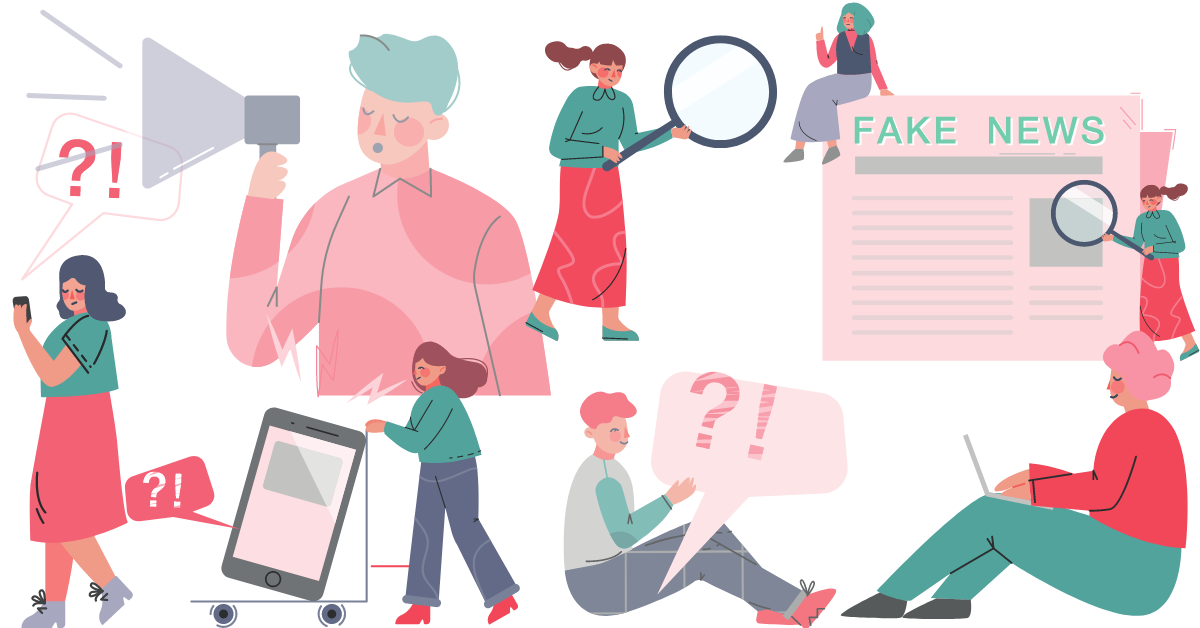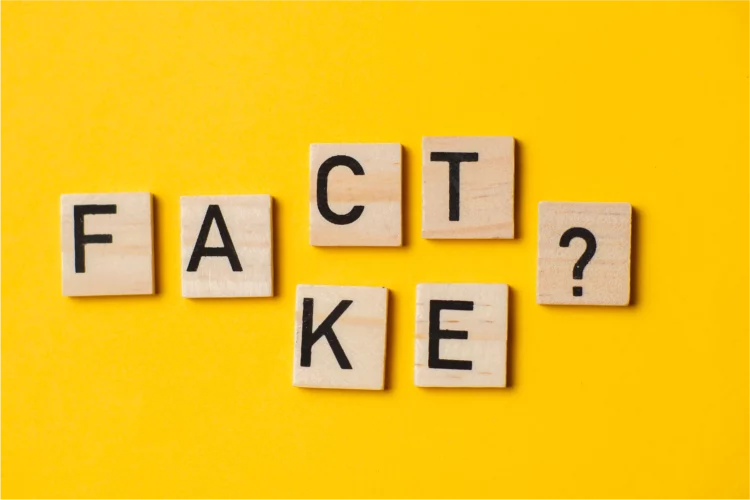In the era of the internet, where information travels faster than ever before, distinguishing between fact and fiction in written content has become increasingly challenging. Articles are no longer confined to traditional journals or newspapers; they now flood our social media feeds, blogs, and various online platforms. But what happens when these articles begin to blur the line between fact and fiction? The impact can be far-reaching—undermining trust, spreading misinformation, and distorting reality in profound ways. This article dives into the consequences, the psychological effects, and the role media literacy plays in navigating the blurred boundaries between truth and fabrication.
The Rise of “Fake News” and the Blurring of Fact and Fiction
“Fake news” is a term we’ve all heard repeatedly in recent years. But what does it really mean when an article distorts the facts or even fabricates entire stories? It refers not only to blatantly false information, but also to content that presents a distorted or misleading version of events, often designed to evoke strong emotional reactions or sway opinions.
The internet and social media platforms have amplified this phenomenon. With algorithms designed to promote sensational content, even articles that only slightly blur the lines between fact and fiction can reach millions. Headlines are optimized for clicks, often at the expense of accuracy. This “clickbait” approach drives readers toward emotionally charged, misleading, or overly simplified narratives that can distort public understanding of key issues.
The Consequences of Blurring Fact and Fiction
1. Erosion of Trust in Media
When articles begin to blur the lines between fact and fiction, the very foundation of trust in journalism begins to crack. Readers lose faith in traditional media outlets, questioning whether the stories they read are reliable or biased. The consequences of this erosion are profound. Trust is the bedrock of democratic societies, and when people can no longer trust the media, they become vulnerable to believing false narratives, conspiracy theories, and misinformation.
Moreover, when the public is presented with a constant stream of conflicting information, it’s easier for individuals to retreat into echo chambers—groups that only reinforce their pre-existing beliefs, making it even harder for any factual information to break through.
2. Political Manipulation and Polarization
Blurring the lines between fact and fiction can also fuel political manipulation and deepening polarization. Fake news often spreads more quickly than real news, particularly when it is sensationalized or emotionally charged. Politicians and organizations can harness this power, crafting narratives that manipulate public perception and sway elections. When articles present a biased or fabricated version of reality, they not only mislead individuals but also create divisions within society.
In recent years, we’ve seen numerous instances where disinformation campaigns have influenced public opinion—whether through the manipulation of social media, false narratives during election cycles, or the spread of conspiracy theories that undermine trust in institutions.

3. Damage to Critical Thinking Skills
As articles blur the lines between fact and fiction, they can have a detrimental effect on critical thinking. Readers may start accepting information at face value without questioning its authenticity, leading to poor decision-making. The lines between fact and opinion can become increasingly indistinct, making it harder for people to discern objective truth from subjective interpretations.
Critical thinking involves actively analyzing, evaluating, and questioning the information we encounter. But when articles are written to deliberately confuse or manipulate the reader, these important skills are bypassed. Instead, emotions take precedence over reason, and the public becomes increasingly susceptible to propaganda and falsehoods.
4. Impact on Public Health and Safety
Perhaps one of the most alarming consequences of misleading articles is the impact on public health and safety. From misinformation about vaccines to misleading health advice, articles that blur the line between fact and fiction can be deadly. People may make life-altering decisions based on false or incomplete information, leading to widespread health crises or even fatalities.
For example, during the COVID-19 pandemic, misinformation spread rapidly, with articles claiming false cures, spreading unfounded fears, or discouraging preventive measures like vaccination. In these cases, blurring the lines between fact and fiction didn’t just distort public perception; it put lives at risk.
The Psychological Effects of Misinformation
The psychological impact of reading articles that blur the lines between fact and fiction can be profound. People are naturally wired to process information in ways that fit their worldview, which makes them especially vulnerable to fake news and biased content.
1. Cognitive Biases and Confirmation Bias
Cognitive biases are systematic patterns of deviation from norm or rationality in judgment, whereby inferences about other people and situations may be drawn in an illogical fashion. Confirmation bias is a particularly dangerous cognitive bias in the context of misleading articles. It refers to the tendency to seek, interpret, and remember information that confirms one’s preconceptions, while disregarding contradictory evidence.
When an article blurs the line between fact and fiction in a way that aligns with an individual’s existing beliefs, they are more likely to accept it as truth. This self-reinforcing cycle can make it harder to recognize misinformation when it appears, further entrenching false beliefs.
2. Emotional Manipulation
Another psychological effect of misleading content is emotional manipulation. Articles that appeal to emotions, whether it’s fear, anger, or joy, are more likely to be shared and believed. The more emotionally charged an article is, the less likely people are to critically engage with the information. Instead, the emotional reaction overrides rational analysis, leading people to accept misinformation more readily.
Moreover, emotional manipulation can create anxiety, stress, and fear, which in turn can affect people’s decision-making and worldview. Articles that promote conspiracy theories or unfounded fears can contribute to societal unrest, political instability, and even public health crises.
The Role of Media Literacy in Navigating Misinformation
With the rise of digital media and the increasing blurring of fact and fiction, the importance of media literacy has never been more pressing. Media literacy refers to the ability to access, analyze, evaluate, and create media in various forms. It’s about teaching people how to approach information critically, evaluate its sources, and question its authenticity.
In a world where articles are increasingly manipulating facts for clicks, media literacy empowers individuals to make informed decisions about what they consume and share. By teaching people how to identify credible sources, recognize biases, and discern between facts and opinions, we can help counter the growing problem of misinformation.

1. Evaluating Sources
One of the key components of media literacy is learning how to evaluate the credibility of sources. In the past, journalistic institutions held a certain level of authority—editors, fact-checkers, and investigative journalists worked to ensure that information was accurate and reliable. Today, anyone with an internet connection can publish articles, which means the responsibility for evaluating the trustworthiness of information falls to the reader.
Critical readers should check the credentials of authors, the reputation of the outlet, and whether the article cites reputable sources. Fact-checking websites, academic databases, and peer-reviewed journals are invaluable tools in this process.
2. Recognizing Bias
Bias is present in virtually every article to some degree. Some bias is inherent in the act of selecting which facts to report and how to frame them, while other bias is more deliberate—intended to sway readers in a certain direction. Media literacy involves being able to recognize both overt and subtle biases in articles.
By learning to identify biased language, cherry-picked facts, and emotionally manipulative tactics, readers can become more discerning consumers of information. This ability to read between the lines is essential in a world where fact and fiction often overlap.
3. Promoting Critical Thinking
Ultimately, media literacy fosters critical thinking. In a world where misinformation is rampant, it’s not enough to simply passively consume content. Readers need to actively engage with information, question its validity, and consider its implications. Media literacy provides the tools for developing these essential skills, helping individuals navigate the complex landscape of modern media.
Conclusion
The line between fact and fiction in articles has become increasingly blurred, particularly with the rise of digital media and social networks. The consequences of this are far-reaching, from the erosion of trust in media to the manipulation of public opinion and the spread of misinformation. However, the key to combating these issues lies in media literacy. By teaching individuals to critically evaluate sources, recognize bias, and think analytically, we can empower people to make informed decisions and safeguard the integrity of public discourse.
As we continue to navigate an information landscape fraught with distortion, the importance of distinguishing fact from fiction cannot be overstated. It’s not just about avoiding fake news—it’s about preserving the truth, protecting democracy, and ensuring that the media remains a reliable source of information for future generations.
















































